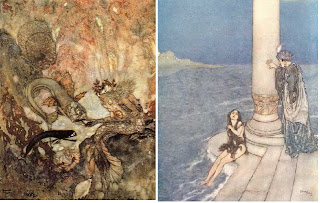Mind mapping is a brilliant way for practioners to explore ideas, the more ideas forming onto the mind map the more obscure they become. Mind mapping is a unique way to summarise information and to show your thought process through a complex problem. classification is an imporatant key through mind mapping as are subheadings and burrowing (branching) out of an idea. The spontaneous thinking of ideas is generated through mind mapping. A few examples;
The examples above are visually effective. The more observational and creative they are the more effective they are to the practioner. The examples above show how the practioner has engaged well with their thought processes and have used colour, type and images to effectivly display spontanivity. This is an example of my thought process for a brief on a student guide I was going to be designing.
 |
Managing a Creative EnvironmentA great inspirational workspace is the key to great ideas. Each workspace is personal to the practioner; items collected, sketchbooks, special dates, photographs even toy figurines could be shown to influence the mind of the practioner. A workspace doesn't necessarly have to be tidy, enough room needed to draw and place a lightbox maybe, however, the walls should be covered in items which inspire the practioner or work that needs to be developed. More importantly work situated at eye level so it's always noticeable and you don't forget it. A good blog which was useful in my research was: http://www.eightyonedesign.co.uk/how-would-you-improve-your-graphic-design-studio-or-office/ which has a long list of work spaces and places which are above the normale, also artistic and inspiring.
My workspace at the moment is my bedroom. My room is meduim sized and I keep my laptop and lightbox ontop of my chest of draws. I also have a shoebox where I keep all my brushes and paints. I am a very organised person, although, when it comes to art I have a board where I keep collected items for inspiration. If I had my own place I would have a studio but because I am a student living at home I haven't got the say in turning half of my bedroom into a work area. However, I work around it and display work in folders and sketchbooks.
 |
| Pixar Workspace area- Inspirational. Would be my dream job to work in an area like this. No wonder they came up with great animated movies like Monsters Inc and The Incredibles. |
Examples of collected work spaces from BCU Fine Art students, Margaret Street.
 |
| Sam |
 |
| Morna |
 |
| Roseanna |
 |
| Laura |










